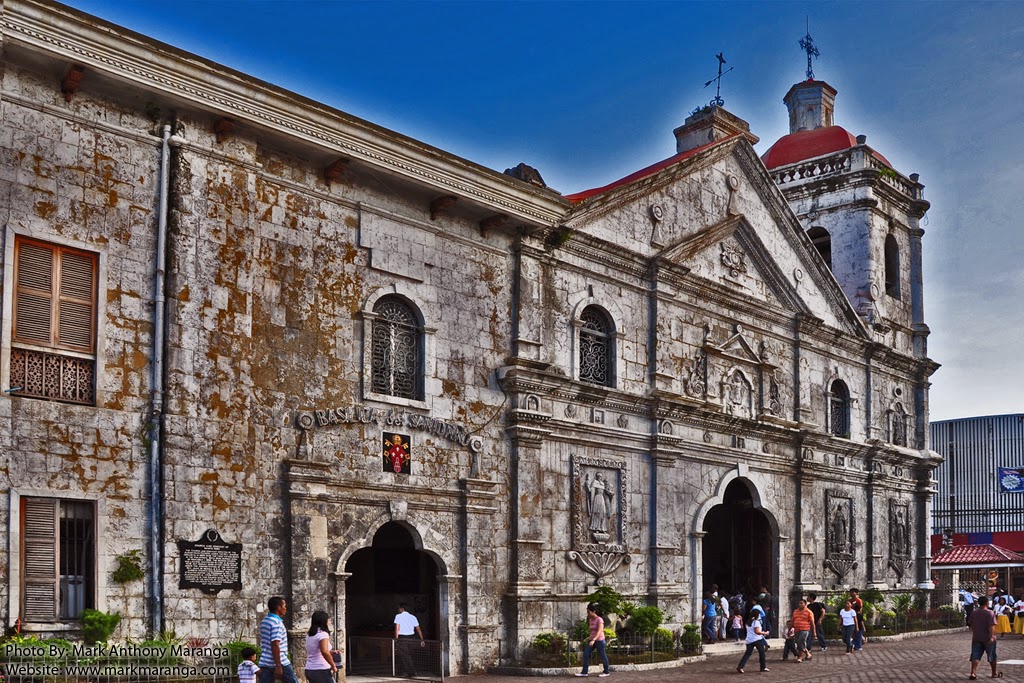The Minor Basilica of the Holy Child (Spanish: Basílica Minore del Santo Niño), commonly known as Santo Niño Church, is a minor basilica in Cebu City in the Philippines that was founded in the 1565. It is the oldest Roman Catholic church established in the country on the spot where the image of the Santo Niño de Cebú, a statue depicting the Child Jesus was found in 1565 by Spanish explorers led by Miguel Lopez de Legazpi. The Holy See calls the temple the "Mother and Head of all Churches in the Philippines" (mater et caput... omnium ecclesiarum Insularum Philippinarum). The image is the same statue given by Ferdinand Magellan to the wife of Rajah Humabon as a gift over forty years after Humabon's baptism to Christianity on April 14, 1521. It was found by a soldier preserved in a burnt wooden box after Legazpi razed the village of hostile natives. When Pope Paul VI made the church a basilica in 1965, he said it was "the symbol of the birth and growth of Christianity in the Philippines.
The present building, which was completed from 1739-1740, has housed the oldest religious image in the country ever since.
Previous churches
The church of the Holy Child was founded by an Augustinian priest, Andrés de Urdaneta, on April 28, 1565. The first church and convent were built out of earth, hard wood and nipa. Both structures burned down on November 1, 1566. In 1605, Rev. Pedro Torres started the construction of its replacement. The second church was completed in 1626, but was also destroyed by fire, in March 1628. It was rebuilt immediately under the administration of Rev. Juan de Medina with stone and bricks, but construction was stopped because of problems with the integrity of the bricks being used.
Present church
Fernando Valdés y Tamon, the Spanish governor of the Philippines, ordered the church in 1735 to be constructed of hard stone. Father Provincial Bergaño, Governor-General Fernando Valdes, Bishop Manuel Antonio Decio y Ocampo of Cebu and Rev. Juan de Albarran, Prior of the Santo Niño, started the foundations of the church on 29 February 1735.[1] Construction was designed and led by Rev. Juan de Albarran, and it was completed in 1739 or 1740. The convent and library were later added and completed in 1764.
In 1965, during the fourth centenary of the Christianization of the Philippines, Pope Paul VI elevated the church to the rank of minor basilica; it remains under the care of the Order of St. Augustine.
On April 28, 1565, Juan Camus, a sailor in the fleet of Miguel Lopez de Legaspi, found in a modest house of the then village of Cebu the image of the Santo Niño, which at the time all agreed had been brought from Europe. Deeply impressed by this finding and aware of its significance, Legaspi ordered an official inquiry conducted; the document drawn on May 16 of the same year and still extant in the archives of the Santo Nino Convent of Cebu, tells us from the testimony of eyewitnesses that the Image was found inside a small pine box, preserved in almost perfect condition; it had on a little shirt and cap; two of its right hand's fingers were raised in a gesture of blessing, while the left hand held a globe symbolizing the world.
In a solemn procession the image was carried to the provisional Church the Agustinian Fathers were using at the time; later, another Church was built on the exact location where the image has been found; this is the site of the Santo Niño Church where the Agustinians have cared for the image and the Filipino people have venerated it through the centuries.
An earlier authenticated entry in the journal of Pigafetta, clerk in the Magellan expedition, explains the original of Santo Niño; on the day Queen Juana was baptized by Father Pedro Valderrama, chaplain on that expedition, Pigafetta himself presented her with the Image.
During the last World War, a bomb fell inside the church, but the image was found unscathed. It was one of the numberless miracles and powers attributed to the Holy Image.
In 1965 the interior of the historic church was renovated for the observance of the Fourth Centennial of the Christianization of the Philippines held in Cebu City. It was during this centennial celebration that the church, on April 1, 1965, was elevated to the rank of Basilica Minore by the Sacred Congregation of Rites with all the rights and privileges accruing to such title.
With the full cooperation and support of the Filipino people and sanctioned by the National Historical Commission of the Philippines, the Agustinian Fathers have built a marble chapel inside the Basilica. Construction of the chapel started in August 1975. This fitting shrine of Santo Nino now serves as the center of devotion of Catholic Philippines. Here the miraculous image of the Comforter of the first missionaries and now the Patron of the Philippines is being honored and venerated.
To preserve our religious and cultural heritage, President Ferdinand E. Marcos, since August 1, 1973, declared the Basilica and Convent of Santo Niño as National Shrine together with other historical places in the Philippines.
The Nave Santo Niño de Cebú Basilica
Historical Marker
The frescoes on the ceiling of the Basilica































.jpg)












.jpg)
